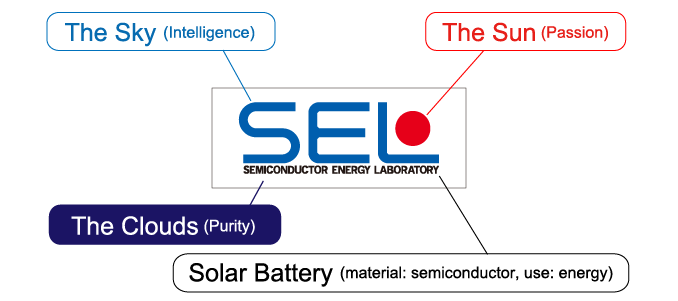New 8K OLED Displays for Tablets and Laptops: 8.3 and 13.3 Inches
by Anton Shilov on December 21, 2018 1:00 PM EST
Semiconductor Energy Laboratory, a technology developer from Japan, has developed the industry’s first 8.3 and 13.3-inch OLED displays featuring an 8K resolution. The monitors use crystalline oxide semiconductor technology and they are likely preliminary designs for future product commercialization. The company also recently showcased a bendable 8.6-inch OLED panel, potentially for a foldable tablet or smartphone.
| Size | Resolution | PPI | Refresh Rate |
Bendy |
| 8.3-inch | 7680 x 4320 | 1062 | 60 Hz | - |
| 13.3-inch | 7680 x 4320 | 663 | 120 Hz | - |
| 8.6-inch | 1900 x 1200 | 263 | 60 Hz | Yes |
Both of SEL’s OLED panels featuring a 7680×4320 resolution use a color filter that relies on CAAC-IGZO (c-axis aligned crystalline indium gallium zinc oxide) material. The 8.3-inch 8K panel can boast with a rather high pixel density of 1061 pixels per inch and has a refresh rate of 60 Hz. The larger 13.3-inch 8K panel features a pixel density of 662 PPI, but has a refresh rate of 120 Hz, which is particularly high for an OLED. The 8.3-inch 8Kp60 OLED was demonstrated last month at SEMICON Japan, whereas the 13.3-inch 8Kp120 OLED currently exists only in SEL’s labs.
The 8.3-inch display is 1062 PPI. For comparison, Sony's Z5 Premium with a 5.5-inch display and 4K resolution was 801 PPI. At 8.3-inches, it's a little big for a smartphone, so it will be interesting if that size can come down a little bit. 8K at 6.5-inches would be 1355 PPI, so the power draw would be quite interesting.
Other notable developments of SEL include a foldable 8.6-inch OLED panel with an 1920×1200 resolution rated for 10,000 bend/unbend cycles (that is 27.4 folds per day over a year) as well as OLED panels capable of displaying the BT.2020 color space.
The primary focus of Semiconductor Energy Laboratory’s work is development of crystalline oxide semiconductor technologies for various applications including chips and displays. CAAC-IGZO is recognized as one of next-generation materials that enable high-resolution low-power displays, so SEL is working on its practical implementations. Being an IP-licensing company, SEL does not have its own production capacities, so it will need a partner to make CAAC-IGZO-based 8K OLEDs a reality.
Related Reading
- Samsung Begins Sales of 65-Inch Q900R 8K UHDTV in the UK
- Samsung Starts to Take Pre-Orders on 85-Inch Q900 8K UHDTV
- Samsung’s One Invisible Connection: 75 Gbps and 230W in a Ultra Thin Cable
- Sharp’s 8K UHD TV Available in Japan, Listed in Europe for €11,899
- Sharp Announces 2nd Gen 8K UHD TVs at IFA
- AUO to Ship 8K UHD TV Panels in Coming Months
- Philips Demos 328P8K: 8K UHD LCD with Webcam, Docking, Coming in 2018
- Dell’s 32-inch 8K UP3218K Display Now For Sale: Check Your Wallet
Source: Optronics Online












59 Comments
View All Comments
Santoval - Friday, December 21, 2018 - link
The first two resolutions of your table are incorrect. They both report a 4K rather an 8K resolution.Ian Cutress - Friday, December 21, 2018 - link
My fault. Fixed.logamaniac - Friday, December 21, 2018 - link
Is there a point to these resolutions for this size of a screen?austinsguitar - Friday, December 21, 2018 - link
just sounds like a stupid resolution for any small size display... this is just dumb, cool, but dumb.Ian Cutress - Friday, December 21, 2018 - link
The demand for clarity with Chinese and Japanese characters is quite high, especially less than a few inches from your facemr_tawan - Saturday, December 22, 2018 - link
Even in writing, you'd need smaller tips to write chinese + kanji character well in 0.5x0.5 grid. I think 0.03mm or smaller pen is popular in Japan for the same reason.PeachNCream - Saturday, December 22, 2018 - link
Super Famicom...Flunk - Sunday, December 23, 2018 - link
Really? It's never been an issue reading Japanese on my Pixel C (2560 × 1600).I think this is more of a case of features for features sake. I'm sure this trend will die out like ultra-high definition audio technologies. People will eventually realize they can't tell the difference and not pay for it. For an example see Super Audio CD or DVD Audio.
Death666Angel - Sunday, December 23, 2018 - link
"I think this is more of a case of features for features sake." if you guys were in charge of anything, we'd still be working on 12" monochrome 640x480 monitors. :D "80 columns is all you need!"Oxford Guy - Friday, December 28, 2018 - link
There are people who can tell the difference. I don't care if I read 1000 more articles that "prove" that lossy compression schemes like AAC and MP3 sound identical to uncompressed 16-bit 44.1 audio. They don't. Moreover, even with Macbook Pro laptop speaks (really crappy) I can hear the difference between 16-bit 44.1 and higher spec. I can also hear the differences between the three dithering schemes in Logic.16-bit 44.1 KHz audio sounds pretty good (and vastly better than lossy compression) but the sampling rate isn't as good as it should be. DVD audio is slightly better at 48. 20-bits at 88 KHz is likely enough for anyone.
SACD uses lossy compression, also. I don't know if it impacts the sound quality, though, because I have never heard one.